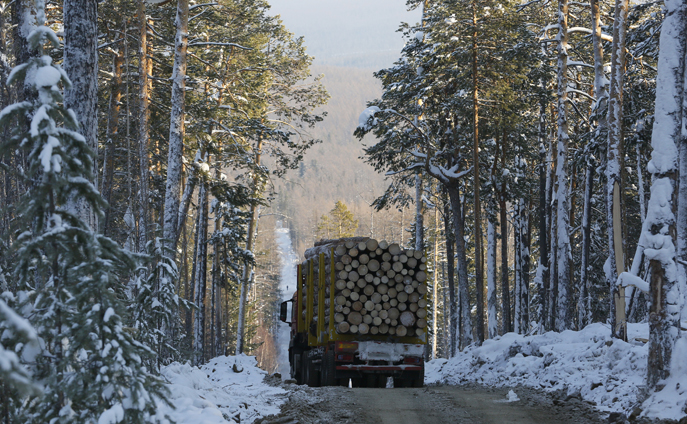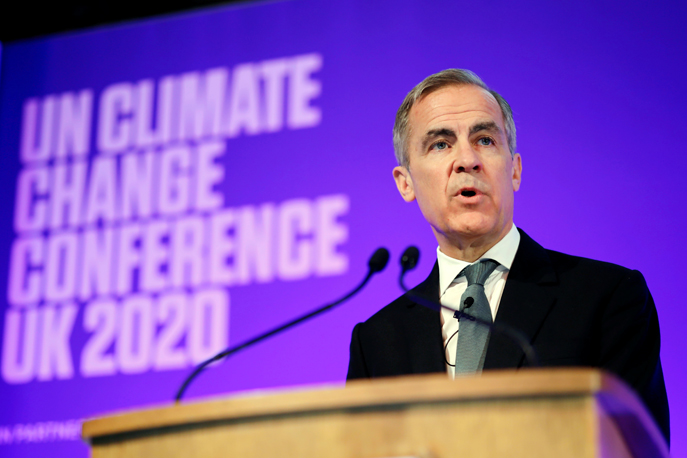Amid investor and NGO concerns about greenwash potential from offsets, Terry Slavin untangles the slew of intersecting new initiatives to bring credibility to corporate pledges to protect biodiversity, including the Science Based Targets Network and Taskforce for Nature-related Financial Disclosures
There are few issues that divide opinion in the climate community more than carbon offsetting. A strong feature in the fast-growing mountain of corporate net-zero targets, there are fears that “net-zero washing” by companies that offset emissions rather than transform their business models will tar those investing in credible nature-based solutions with the same muddy green brush.
In July, environmental NGOs the Natural Resources Defense Council and Stand.earth accused Procter & Gamble of “the ultimate greenwash”, sayings its plan to be climate-neutral by 2030 depends on offsetting 30m tonnes of CO2 emissions through conservation projects in the Philippines, Brazil and California, “while continuing to use climate-critical boreal forest fibre for its throwaway tissue”.
In October, the world’s largest asset manager, BlackRock, backed a shareholder resolution calling on Procter & Gamble to report publicly on deforestation risk in its sourcing of tissue paper and palm oil. BlackRock said P&G's reporting should be aligned with Sustainability Accounting Standards Board (SASB) standards and the Task Force on Climate-related Financial Disclosures (TCFD).
In its annual progress report this month, CDP gave P&G Bs for its work on climate and water risk, but an F on forests for failing to heed investors' requests to disclose to CDP. A P&G spokesman told The Ethical Corporation that it was engaging with the shareholders who backed the resolution and would "issue a report assessing how we can further increase the scale, pace and rigor of our efforts on responsible forestry ... by mid-2021." P&G also said it plans to participate in CDP's forests survey in 2021.
It’s in everyone’s interest to distinguish between genuine actors and those that are not doing the hard work of first reducing their own emissions
“Offsets are at the heart of credibility of net-zero commitments,” says Nigel Topping, the UNFCCC high level climate champion who, with Chile’s Gonzalo Muñoz, has been charged with bringing the voice of non-state actors – regions and cities, private sector and NGOs – to the table at the COP26 negotiations in Glasgow next year.
“I know there’s a lot of scepticism among civil society actors that net-zero goals are greenwashing” if they include plans for offsetting, Topping says. “It’s in everyone’s interest to distinguish between … genuine actors and those that are not doing the hard work” of first reducing their own emissions in line with science.
Mark Carney, the UN special envoy for climate finance, told the Financial Times recently that “there are issues with verification, and greenwashing potentially” in the existing offsets market. But the market, currently worth $300m, needs to scale up to $50-100bn a year if we are to keep the world within a safe limit of 1.5C of warming by 2050, with McKinsey estimating that carbon sequestration and removal will have to account for at least 2 gigatons (GT) of the 23GT cut in annual emissions that will be required by 2030.

The IPCC’s Special Report on Climate Change and Land, which was published last year, also highlighted the need for nature-based climate solutions, saying up to 13% of the accumulation of greenhouse gases in the atmosphere is due to deforestation and land use change.
In September, Carney together with Standard Chartered CEO Bill Winters, established the Taskforce on Scaling Voluntary Carbon Markets, with the goal of establishing a credible and global offset market. A blueprint for a pilot trading scheme is expected to be published ahead of COP26.
The fact that P&G has a validated 2C-aligned science-based target, despite charges of lack of transparency on deforestation risk, points to what Dexter Galvin, global director for corporations and supply chains at CDP, describes as a “yawning gap”. Up until now, the Science Based Targets Initiative has been solely focused on decarbonisation, and hasn’t permitted companies to balance out their own emissions with CO2 reductions from nature-based solutions like tree-planting.
It is an undeniable priority that ambitious action must be taken to eliminate deforestation and to halt nature loss
But such balancing of the carbon ledger will be permitted – and even encouraged – for the residual emissions of companies that have already cut their emissions in line with science, under a new global standard for corporate net-zero targets, which is also due to be launched at COP26 next year.
The SBTi’s Foundations for science-based net-zero consultation paper, released in October, said: “It is an undeniable priority that ambitious action must be taken to eliminate deforestation and to halt nature loss. In addition, protecting, restoring and enhancing ecosystems can improve our ability to withdraw carbon from the atmosphere.”
A raft of companies, including PepsiCo, Kellogg’s, Danone, General Mills, L’Oréal, Nestlé, Unilever, Firmenich and Walmart, have already announced targets to protect and regenerate nature, beyond commitments to end deforestation, as part of their climate commitments. Nestlé, which this month pledged to spend €3bn on cutting its CO2 emissions in the next five years, has earmarked SF1.2bn (€930m) to source half its ingredients through regenerative agriculture by 2030.

Earlier this year, a new organisation called the Science Based Targets Network (SBTN) was born, to expand on the SBTi’s work on CO2 emissions, and come up with scientifically rigorous guidance for companies and cities that will allow them to “operate within the limits of Earth’s systems".
SBTN is backed by all the partners in SBTi – WWF, CDP, World Resources Institute and We Mean Business – and another 35 organisations, including WBCSD, IUCN, the Nature Conservancy, the World Benchmarking Alliance and World Economic Forum.
Erin Billman, executive director of the SBTN, said the network emerged because companies had been looking for a consensus position from NGOs on whether what they were doing on nature was enough, in the same way that the Accountability Framework was established to give companies consensus guidance on what they needed to do to end deforestation.
We don’t want to incentivise action that is myopically focused on climate at the expense of nature, because it won’t solve either climate or nature loss
“You can't solve climate change without stopping nature loss, and you can't stop nature lost without addressing climate change. We realized we really needed to be looking across these issue areas” to work out what the desired outcomes of nature-based targets should be, and work backwards to come up with what action on the ground needs to be incentivised, Billman said.
“When we talk about nature-based solutions, one nuance that is often missing in conversations is that we are talking about solutions that deliver for nature.” She gives the example of monocropping to grow biofuels. “We don’t want to incentivise action that is myopically focused on climate at the expense of nature, because in the long run it won’t solve either climate or nature loss.”
In September, SBTN published its first guidance “to point companies in the right direction for now”, using the International Union for Conservation of Nature's (IUCN) global standard on nature-based solutions, launched this year, as best practice. But the plan is to develop the first draft of a robust methodology some time in 2022.

In November, companies including PepsiCo, Mahindra Group and L’Oréal were first to sign up to a corporate engagement programme to help SBTN develop and road-test the methodology, and ensure it is user-friendly and easy to implement – though Billman says involvement in the programme doesn’t amount to endorsement by SBTN.
One of the big nuts to crack, for both the SBTi standard and SBTN, will be ensuring companies will be held to account on delivering their climate and nature-based commitments.
Billman said SBTN is working closely to ensure its standard is aligned with the Taskforce for Nature-related Financial Disclosures, another important initiative launched this year, led by WWF, Global Canopy, UNDP, UNEP FI, which is working to develop a full reporting framework for nature by the end of 2022.
There’s a lot of organisations getting to grips with that symbiosis of different environmental topics
A key goal is to ensure that companies will be reporting verifiable and usable data on their nature-based work for investors and regulators, enabling progress to be benchmarked by mainstream ratings agencies like Moody’s, and World Benchmarking Alliance.
She said the needs to be a “carrots and sticks approach”, with SBTN developing the tools and methodology to allow NGOs like Ceres and ShareAction to bring investor pressure to bear.
CDP’s Galvin says nature-based solutions are part of the plans of many of the 316 companies that have signed up to the Business Ambition for I.5C programme, launched by SBTi last year.
He says the 2030 climate commitments of L’Oréal and Unilever have targets that “include land use and biodiversity and are really stretching and interesting", with L’Oréal committing to use bio-based materials in its packaging, without increasing the land footprint of its operations.
“There’s a lot of organisations getting to grips with that symbiosis of different environmental topics. We see SBTN as a really good north star.”
What the IPCC says about the role of nature-based solutions

Excessive use of fertilisers and pesticides is accelerating soil degradation. (Credit: Charles Bowman/Shutterstock)
In its 2019 Special Report on Climate Change and Land, the IPCC estimated that afforestation/reforestation could remove 0.5-10.1 gigatons of equivalent carbon dioxide (GtCO2e) a year – equal to China’s 2010 emissions at the very top end, though this would assume all land currently given over to grazing was reforested. It said the potential for soil carbon sequestration in croplands and grasslands at only slightly less, at 0.4-8.6 GtCO2e per year.
In fact, to limit warming to 1.5C with no or limited overshoot, the IPCC’s modelling calls for net carbon emissions from land-use change to be cut to zero by 2030, an extremely tall order given that we are now only nine years away, and unlike CO2 emissions, the market for nature-based solutions is in its infancy.
As Kelly Levin, a senior associate at WRI points out in a blog, done right, reforestation has many co-benefits, including providing habitat, enhancing soil fertility, controlling floods, and improving air and water quality. But done wrong, large-scale afforestation could compete with other land uses and threaten food security, water resources and biodiversity – “considerations that are not always taken into account in climate models,” she points out.
And while the role of forests in regulating the climate is well-known, there is far less scientific certainty about practices that build soil carbon, despite growing awareness of the vital role they play in producing food, storing carbon and purifying water.
A report this month by the UN’s Food and Agriculture Organization, compiled by 300 scientists, describes the accelerating degradation of soils by excessive use of fertilisers, pesticides and antibiotics in intensive farming and deforestation as a crisis “at least” as grave as climate change. Worryingly, the report also highlights the gaps in scientific knowledge, including the fact that 99% of microbial species, essential for turning waste into nutrients, haven’t yet been studied by scientists.
This article is part of the in-depth Race to net zero briefing. See also:
Calls grow for sheriff to police ‘wild-west’ of net-zero targets
Biden’s first steps spur audacity of hope for US climate action proponents
‘Great climate ambition from UK but mind the gaps,’ experts warn
‘Where’s the climate science behind continuing to bankroll coal?’ NGOs demand
How brands are joining the communications battle for more sustainable consumption
‘Investors don’t understand how much climate action is needed from companies’
‘With the rise in home working, we need a scope 4 for GHG emissions’
IPCC Carbon offsetting Mark Carney BlackRock Procter & Gamble boreal forest CDP UNFCCC Science Based Targets SBTi COP26 CO2 emissions SBTN Taskforce for

